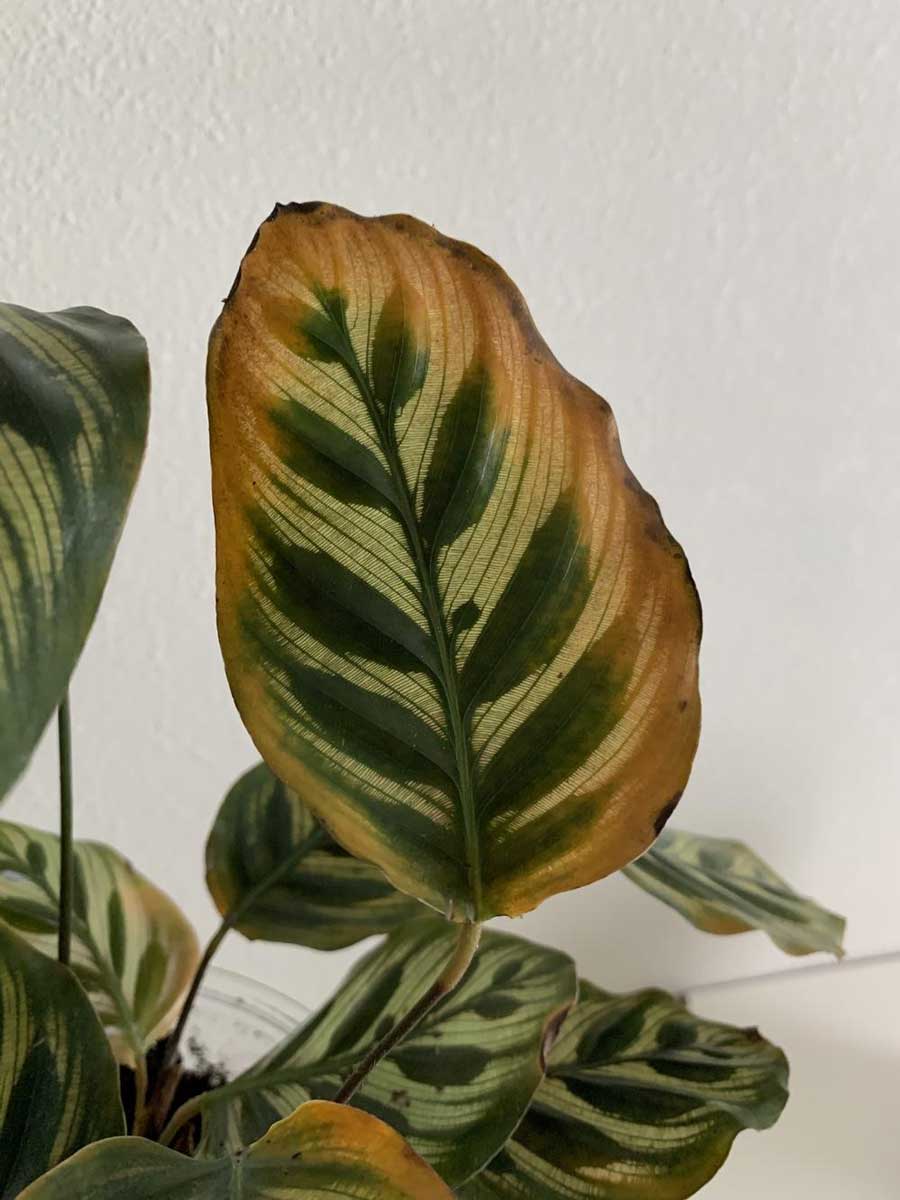Calatheas are one of the most elegant and low-maintenance indoor plants you will come across, but even that does not mean they cannot be somewhat demanding. These are some well-mannered plants when you make sure the bare minimum care requirements are met. They will thrive and flower and give your house an instant personality. But don’t get fooled! They will misbehave when they’re not given the right kind of care.
Calatheas are naturally wild plants that grow beneath the canopies of tropical rainforests. But their beauty and easy-to-grow and maintain qualities have taken them from tropical rainforests directly into our homes. These plants have been extensively domesticated so much that some varieties are nowadays a rare sight in the wilderness, although they are quite popular indoor plant choices. And yet, although domesticated, these plants haven’t lost their innate behaviour system. This implies the following, Calatheas have to be given exactly what they need. With the right care, they will thrive and rapidly become the most elegant decor accent in your house.
When in distress, Calathea plants will provide a number of visual cues. If you have noticed your Calathea leaves curling, it is one way your plant is telling you that something is not right. And in this article, we will explore all the factors that lead to Calathea leaves curling.
Related post
Factors that lead to Calathea leaves curling
Over/under watering
With Calatheas, both underwatering and overwatering can be the factors that lead to Calathea leaves curling. The former, however, is more common. Plant dehydration happens when the plant does not get enough water. Naturally, to reduce water loss, the plant will activate the leaf curling mechanism. In this way, Calathea will preserve water until the next watering session. Overwatering, instead, can lead to root rot, which may also be a contributing factor to curling leaves. Watering requirements change seasonally. In winter, you should water the plant less. In summer, however, you should water the plant more often.
If in doubt of how much water your Calathea requires, you can take the soil as a point of reference. Damp soil (moist but not soggy) at all times is a good indicator your Calathea is receiving enough water.
Soil condition
Calatheas require moist soil but never soggy or dried out. The plants love a mix of potting soil, orchid bark, charcoal, and perlite in terms of soil type. Whatever soil mix you choose, it has to be well-drained. Perlite will help deliver oxygen to the roots and increase drainage.
Water quality
Calathea originates from a place on Earth that receives the most rain of all of the biomes in a year. For this reason, rainwater is the most natural way to hydrate your plant. However, both bottled and distilled water will do. You should avoid hard water because of its content of salt and other minerals that can be toxic to your Calathea. The plant will furl its leaves as a way to protect from the toxins. Switching to rain, distilled, or bottled water will rapidly make the plant go back to its normal condition and unfurl its leaves.
Temperature
Calathea plants can withstand temperatures colder than 15 degrees Celsius (but not less than 10); however, they will be in their survival mode. To thrive, they require warm to moderately hot temperatures resembling their native climate. Anything between 15 to 21 degrees Celsius will be good enough for your Calathea plant.
Nutrition
Although Calatheas don’t require much nutrition, you can use an all-purpose fertilizer (rich in nitrogen, phosphorus and potassium) in order to help it thrive. The fertilizer can be applied monthly but only in spring and summer, especially during the flowering season. In winter, the plant goes dormant, and the growth slows down, so it is not advisable to fertilize it during the colder months. Don’t use too much fertilizer, as overfertilizing your plant can lead to a series of hard-to-fix issues.
Root rot
Root rot in Calatheas can usually occur due to overwatering. Calatheas don’t like being in soggy soil for a long time. If you noticed the root turning brown and mushy, you should repot immediately.
Sunlight
Because of their natural habitat in the wilderness, Calatheas prefer indirect light to direct light. Prolonged exposure to bright lights will discolour or burn the leaves. Place the plant in a low-light spot in your home. Take into consideration that too little light can limit growth.
Insect infection
Plants like Calathea can get infected by pests like spider mites, aphids, mealybugs and fungus gnats. However, spider mites are the most common causes of pest infestation. They cause damage to the plant’s foliage, making it curl and wilt. Since spotting the mites is somewhat tricky because of how small they are, you should look for pale dots across the leaves caused by their bites. You can also look for their eggs or wispy webbing across the leaf surface.
Humidity
All Calathea varieties thrive in a high humidity environment. At least 50 percent humidity is required in order to ensure optimum growth and health. If the indoor climate gets too dry in summer, you should place the plant next to a humidifier and regularly use a mister on the leaves.
Calathea leaves curling can be due to a range of factors. But once you ensure all basic requirements are met, your plant will spread its beautiful leaves and give you the best foliage colour, growth and bloom.
Plant inspiration tip: looking for more life in your home, then check out the beautiful Cebu Blue potho.



